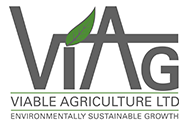
It is becoming increasingly apparent that there is now a chronic POTASSIUM deficiency throughout the Canterbury region which has been largely overlooked for several years and appears to be getting steadily worse. It is now regularly seen that large yield responses are easily obtained with reasonably moderate applications of potassium fertilisers. Compounding this issue is the fact that large numbers of farmers are increasingly lacking appropriate guidance, and the prevailing environmental propaganda is a distraction to the industry, serving only to confound the real issues.
Soil testing has consistently confirmed that where low levels of potassium are found, there is going to be a good economic response to applications of potassium across a wide range of crops and soils, and especially grazed pastures.
The fact that this has been overlooked for an extended period means that in severe cases, large capital inputs of K are required to redress this issue and prevent catastrophic loss of production. Low pH is also compromising Nutrient Use Efficiency across a wide range of farming enterprises and in many cases pasture quality/quantity is also severely curtailed due to several issues which arise from this combination of low pH and low K.
In the current economic climate, this has serious ramifications for the economic viability of agriculture, not only due to the cost of the lost yield, but also the reduced efficiency from other applied nutrients, especially nitrogen. Where low K (and/or low pH) has been overlooked for a period of years, there has been an extended period of time where Nitrogen Use Efficiency is severely compromised. This trend is accentuated on light sandy soils, and the risk of nutrient losses is increased. This is because the magnitude of any economic yield response is controlled by the most limiting nutrient, and all the other limiting nutrients must be considered to get the best yield response.
Some of the reasons for the generally poor appreciation of nutrient dynamics are embedded in the dogma currently taught to young aspirants entering the advisory industry. As an example, I have included the paragraph below which is copied from the Code of Practice for Fertiliser Use and can be found at the following link- http://www.fertiliser.org.nz/Site/resources/
Certified advisers are expected to demonstrate their understanding of nutrient cycling in agricultural systems and use the right information (what is “right information”?) to provide sound farm system advice. (what is “sound advice”?) Auditing was introduced to the Nutrient Management Certification Programme in 2017 as part of building the value (what is the value of failing to deliver value to the farmer?) of the certification programme. Advisers are required to submit reports for auditing as a requirement of continuing professional development. (what about actually measuring yield ?). (Comments Inserted)
The glaring contradiction here is that instead of insisting on a rigorous protocol for the collection of soil samples, the calibration of the analyses, and the interpretation of soil test results to a New Zealand Standard, the Fertiliser Association has deemed that Auditing and Certification have become the objective, when in fact reality clearly shows that increasing yield by minimising any deficiencies is the only viable objective in the quest for sustainability. This simply means that now, more than ever before, nutrient deficiencies must be clearly identified and treated accordingly to prevent loss of yield, loss of income and loss of nutrient use efficiency. NZ Agriculture must be economically viable to be able to genuinely improve environmental outcomes. This is where the industry must focus. No software program can do this without accurate field calibration.
Is there any conflict of interest that ought to be declared in any of this discussion of Nutrient use Efficiency and environmental sustainability?
Where does the Fertiliser Association get its funding from?
Where are the long term calibration trials that are essential to give meaningful interpretation of soil test results?
See below for further reading on the above please see the articles below:
